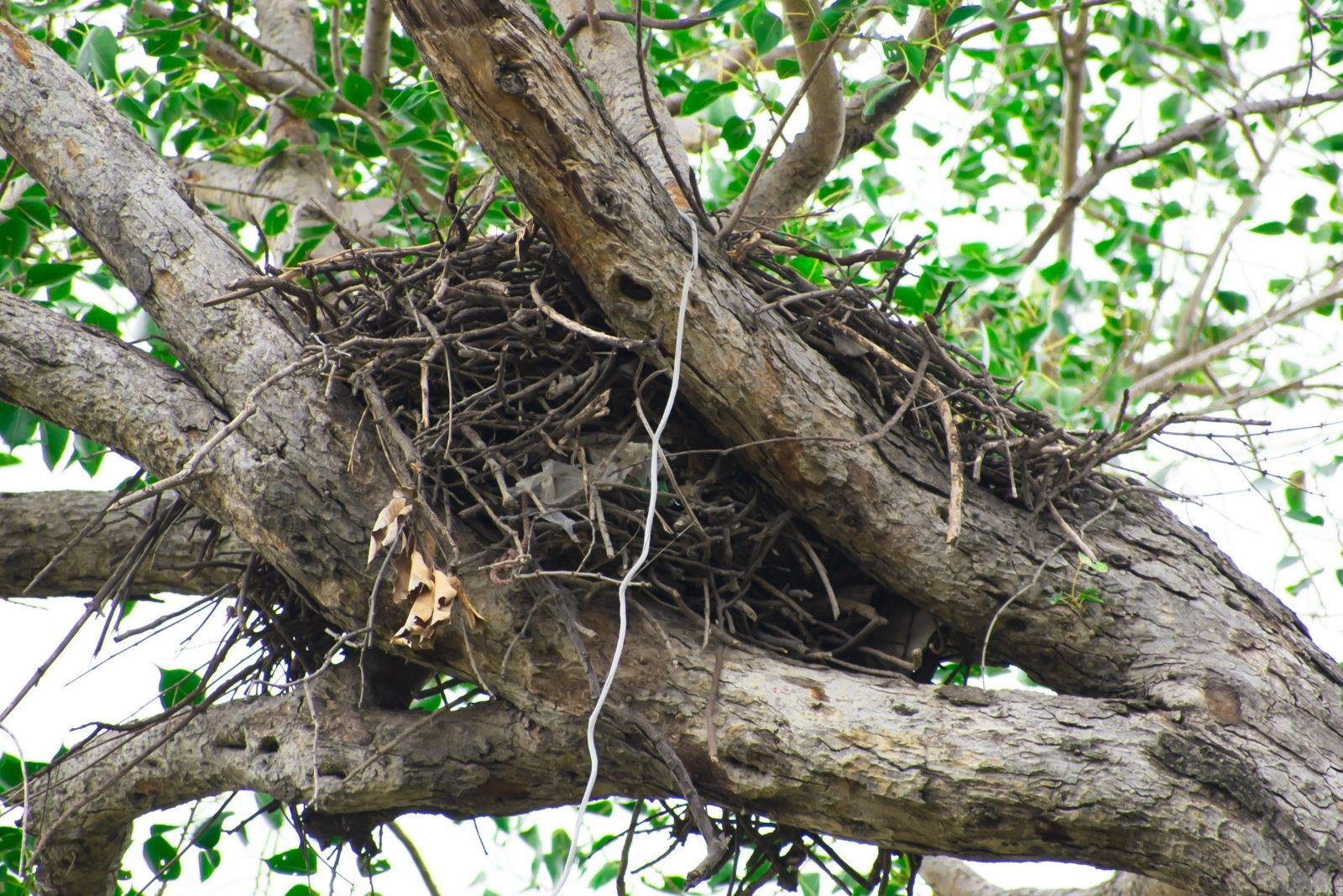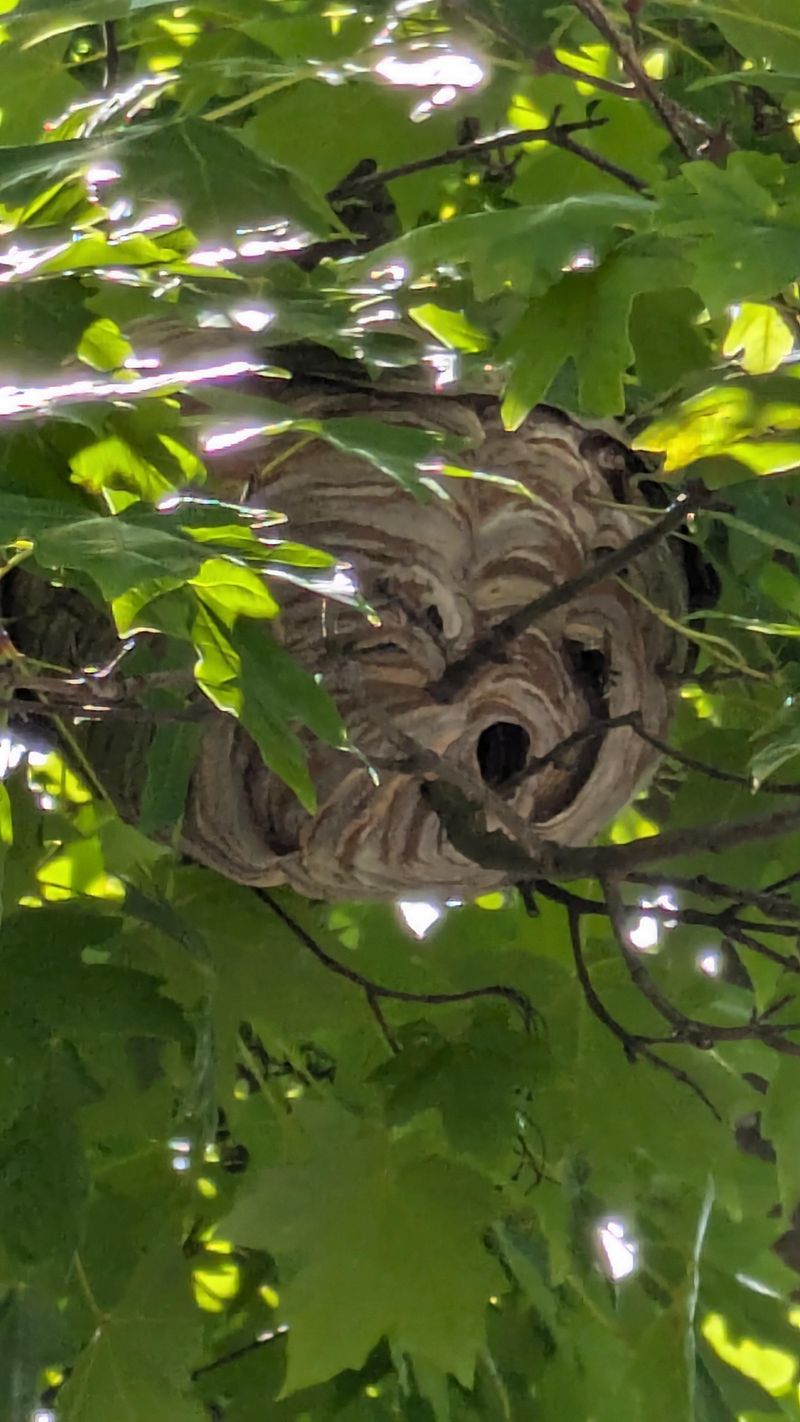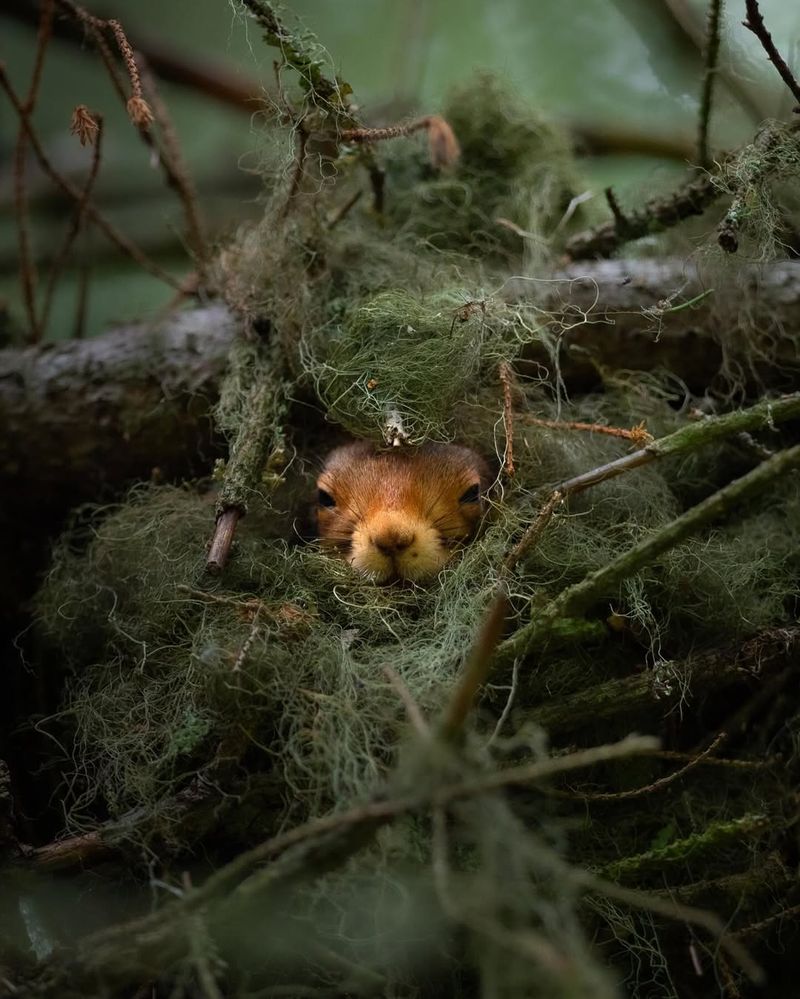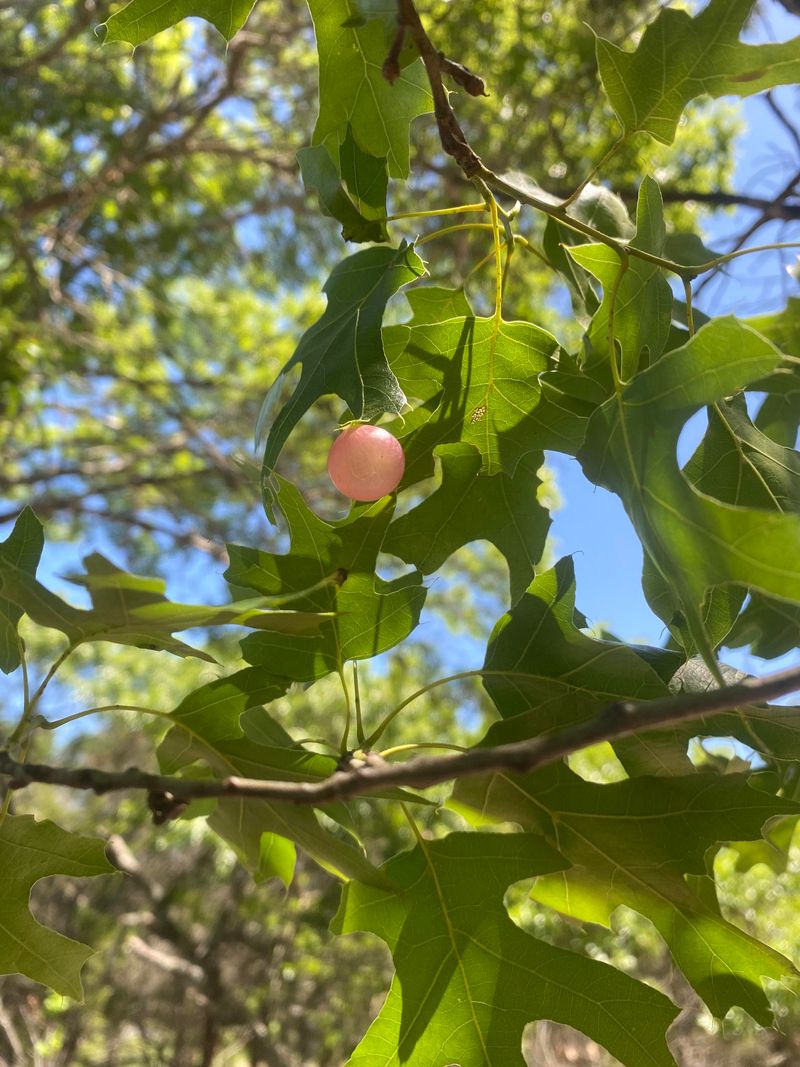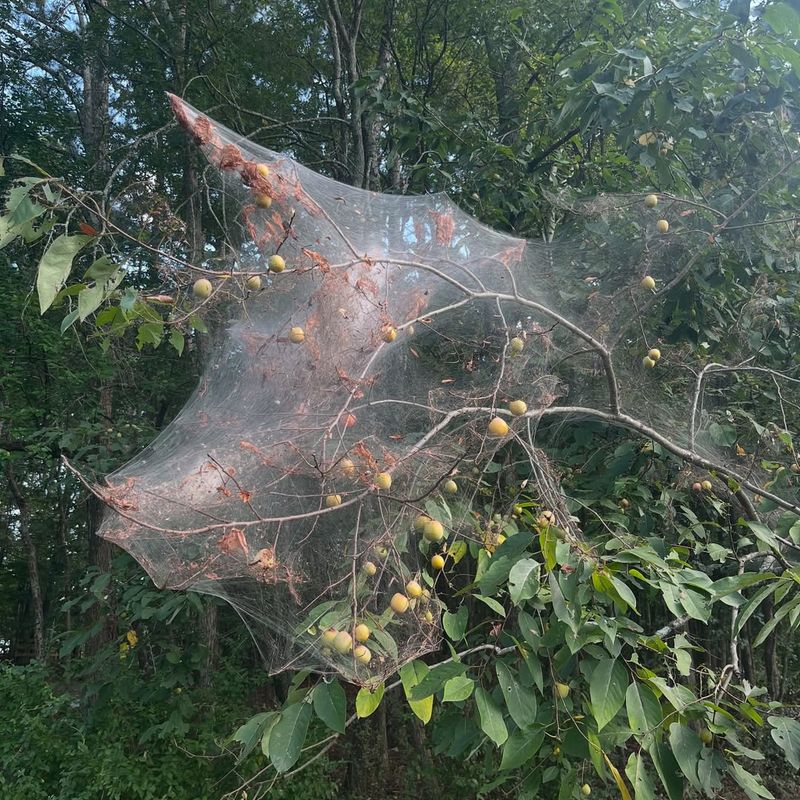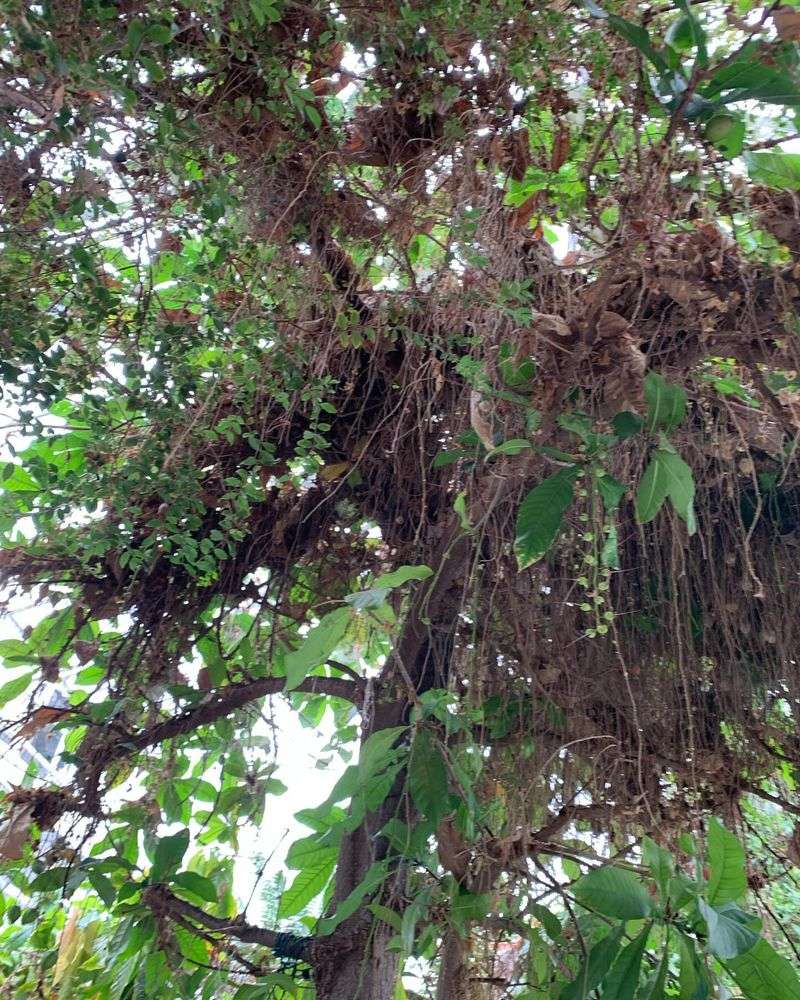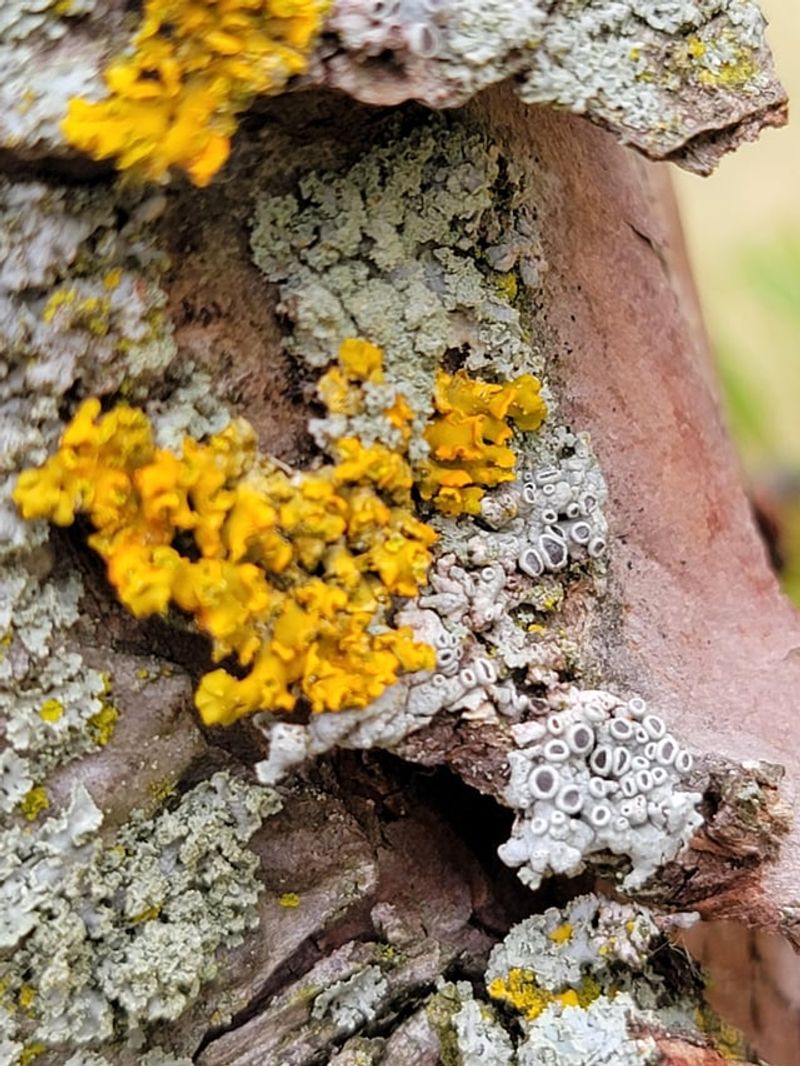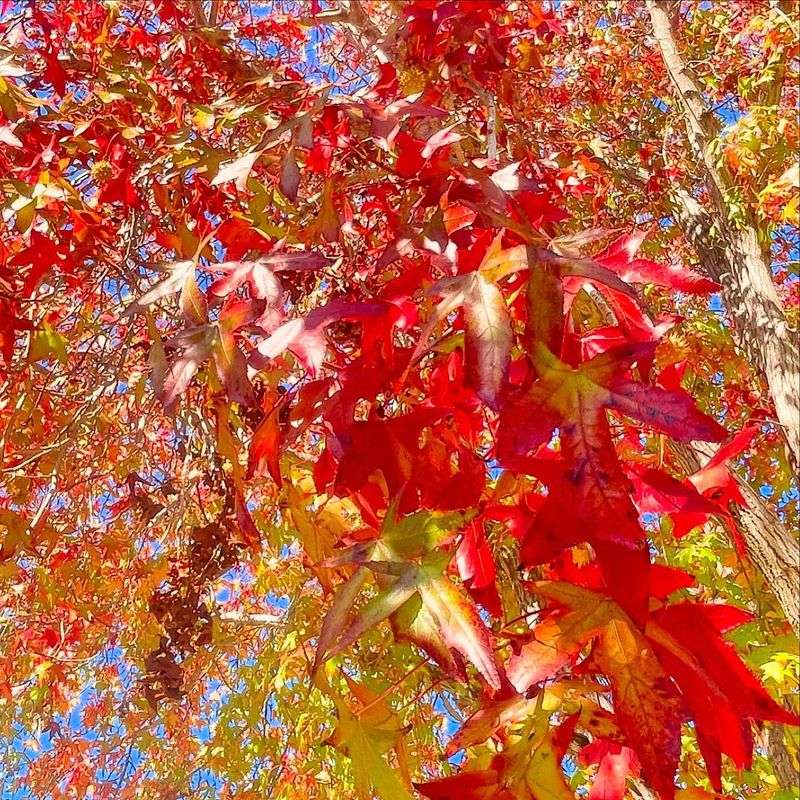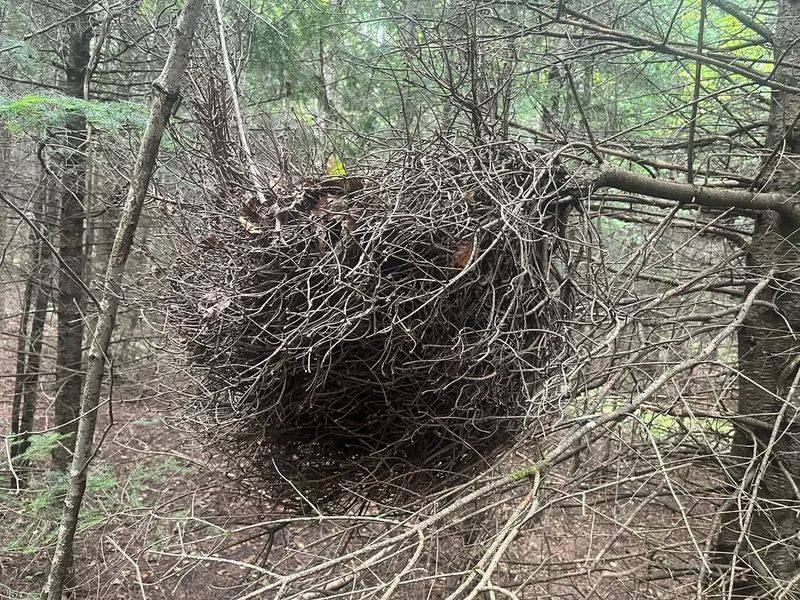Walking through your Illinois backyard, you might notice a mysterious clump tucked into the branches of your oak or maple tree. Your first thought is probably that a bird has built a cozy nest there.
But many of these formations are actually something completely different, and knowing the difference can help you care for your trees and garden better.
1. Paper Wasp Nests Hanging From Branches
Paper wasps create umbrella-shaped structures that dangle from tree limbs, and they look surprisingly similar to small bird nests from a distance. The grayish-brown color and rounded shape fool many Illinois homeowners into thinking songbirds are nesting nearby.
These nests are made from chewed wood fibers mixed with wasp saliva, creating a papery material. You’ll often spot them under eaves or tucked into shrubs and lower tree branches during spring and summer months.
If wasps aren’t bothering your garden activities, leave the nest alone since these insects eat harmful caterpillars and aphids. Once fall arrives, the colony dies off naturally, and you can safely remove the empty nest during winter.
2. Squirrel Leaf Nests Called Dreys
Squirrels construct leaf nests high up in tree branches, weaving together dried leaves, twigs, and moss into basketball-sized spheres. I once mistook one of these dreys in my Illinois backyard for an enormous bird nest until I saw a bushy tail poking out one morning.
Unlike bird nests, dreys have multiple entrance holes and are typically positioned in the fork of sturdy branches. Squirrels build these structures for raising their young and staying warm during Illinois winters.
These nests don’t harm your trees, so there’s no need to remove them. Squirrels actually help your garden by burying acorns and nuts, which sometimes sprout into new trees and shrubs around your property.
3. Oak Apple Galls On Tree Limbs
Oak apple galls appear as round, brownish balls clinging to oak branches, and many people assume they’re abandoned nests at first glance. These formations are actually created by tiny wasps that lay eggs inside oak tree tissue.
The tree responds by growing abnormal tissue around the wasp larvae, forming these spherical structures. They range from marble-sized to baseball-sized and feel spongy or woody depending on their age and type.
Galls rarely damage healthy oak trees in Illinois, though heavy infestations might weaken young saplings. You don’t need to remove them unless you’re concerned about aesthetics, as they eventually dry up and fall off naturally during winter storms.
4. Eastern Tent Caterpillar Silk Webs
Eastern tent caterpillars spin thick, silky webs in the crotches of tree branches, creating structures that look like messy, cotton-like nests. These webs appear in early spring on cherry, apple, and crabapple trees throughout Illinois gardens.
Hundreds of caterpillars live inside these communal tents, leaving during the day to feed on tree leaves and returning at night. The webbing protects them from predators and harsh weather while they grow.
Remove these webs promptly by pruning affected branches or pulling them out with a stick, as tent caterpillars can defoliate young trees. Dispose of the webs in sealed bags to prevent caterpillars from crawling back onto your plants and shrubs.
5. Clumped Dried Leaves And Garden Debris
Wind often blows dried leaves, grass clippings, and garden debris into tree branches, where they lodge and form nest-like clumps. After a stormy Illinois autumn, these accumulations can look remarkably similar to abandoned bird nests from ground level.
Plastic bags, newspaper, and even stray bits of mulch sometimes get caught up in these formations. The random materials lack the woven structure and cup shape that real bird nests have.
You can leave these harmless clusters alone, as they’ll eventually blow away or decompose naturally. However, if they’re blocking sunlight from reaching lower plants or making your trees look untidy, gently pull them out with a rake or pole.
6. Moss And Lichen Formations
Moss and lichen sometimes grow in thick, rounded patches on tree bark and branches, creating fuzzy formations that resemble nests when viewed from certain angles. These organisms thrive in Illinois’s humid climate, especially on older trees with rough bark.
Moss appears as soft, green cushions, while lichen can be gray, green, or even orange in color. Both are harmless to healthy trees and actually indicate good air quality in your neighborhood.
There’s no need to remove moss or lichen from your trees, as they don’t steal nutrients or cause damage. They simply use the bark as an anchor point while making their own food through photosynthesis, much like the surrounding garden plants.
7. Seed Pod Clusters From Sweetgum Trees
Sweetgum trees produce spiky, round seed pods that hang in clusters from branches, and from a distance, these groupings can look like unusual nests. The pods are about golf-ball-sized with pointed projections covering their surface.
These seed balls turn brown in fall and often remain on branches well into winter throughout Illinois neighborhoods. Multiple pods bunched together create a mass that catches your eye when you’re scanning the tree canopy.
While sweetgum pods aren’t harmful to trees, they become annoying when they drop onto lawns and gardens, making mowing difficult. Regular raking keeps your yard tidy, and some Illinois gardeners use the dried pods in fall crafts and decorations.
8. Witches’ Broom Branch Deformities
Witches’ brooms are dense clusters of small branches that grow abnormally close together, creating a tangled mass that resembles a large nest. These deformities are caused by fungi, mites, or viruses that disrupt normal branch growth patterns in Illinois trees.
The affected area produces dozens of thin twigs sprouting from one point, forming a bushy clump. They commonly appear on hackberry, honey locust, and elm trees throughout the region.
Most witches’ brooms don’t seriously harm mature trees, though they look odd and can reduce that branch’s vigor. Prune them out if they bother you aesthetically or if they appear on young trees that need all their energy for healthy growth and development.

